#plastics recycling foundation
Text
#center for climate integrity#cci#society for plastics#plastics industry association#vinyl institute#society for the plastics industry#plastics recycling foundation#epa#eastman chemical#exxon chemical#beyond plastics
13 notes
·
View notes
Text
youtube
Every week, Eco India brings you stories that inspire you to build a cleaner, greener and better tomorrow.
Cigarettes pose a big risk to human health. Their impact on the environment is less well-known. So consider this: Trillions of toxic cigarette butts are tossed out every year, and most don’t land in the trash. Initiatives here in India aim to tackle the problem at its source, and are converting these tiny stubs into sustainable, practical products.
****
Credits:
Supervising Producer: Nooshin Mowla
Script & Field Producer: Jessica Goel
Video Editor: Sujit Lad
Associate Producer: Ipsita Basu
Director of Photography: Richard Kujur
Camera Assistant: Abhishek Yadav
Executive Producer: Sannuta Raghu
#scroll.in#eco india#solarpunk#Cigarettes#cigarette butts#trash#recycling#pottery#Giriraj Prasad#planters#lanterns#ash tray#Oshil Bansal#pollution#Shankar Singh#Project Leher#Vrikshit Foundation#plastic#Thomas Novotny#Kajal Goyal#Buttrush Campaign#Hardik Aggarwal#Youtube#india
3 notes
·
View notes
Note
So I am new to all this but I vibe with animism. It makes sense to me that animals, plants, rocks, stars, rivers etc. have a spirit of their own.
I know all manmade things technically come from the earth and I feel like some things do take on a kind of life. But like…plastic bottles? Coffee mugs? My old desk lamp that’s no longer working properly and needs tossing in the trash? I am finding it hard to view these things as being ‘alive’. (And also having my brain go “brrr does that mean the lamp needs a funeral?”)
Not really a question I guess, just wondering if you had any thoughts on this.
Hello;
I think that treating things with respect is not the same thing as treating them as human.
I treat my altar with respect, and I treat my boyfriend with respect.
I do not dust my boyfriend, or smack my altar's bum.
I mean it doesn't even really translate, does it.
Are all objects worthy of respect? Maybe, that's for you to decide.
If you respect an object, does that mean treating it as human, with a funeral?
Perhaps not, and also very much perhaps not if we decide that the land is definitely living, which means it might not want you burying garbage that could have been recycled or properly disposed of.
Something having a spirit also doesn't mean that a living consciousness is trapped inside of it like Black Mirror. It doesn't mean it lives and dies in a way we understand it.
If you'd like a sorcerous experiment, here is one:
Take an object which you're pretty sure doesn't have a spirit, and try to give it one. Give it an earnest go for a couple of months.
Then, compare it to a similar object which has never received the same level of affection and care.
Then, if you can find one, compare it to an object which you're sure has already developed a spirit.
Perhaps intuition will advise whether any of objects has developed something akin to a spirit, or really seems alive.
This may help inspire an experiential foundation for determining for yourself which things are inspirited, and which are not.
39 notes
·
View notes
Text
IOTA Reviews: Action
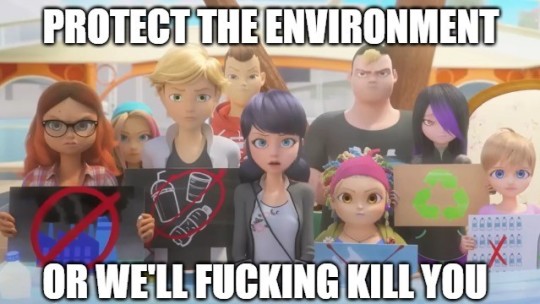
So, this is a interesting one to talk about. Not only is this the first episode in all five seasons to not be written or directed by Thomas Astruc in any capacity (though the other three writers on his team, Melanie Duval, Fred Lenoir, and Sebastien Thibaudeau still wrote this one), not only is it not connected to the ongoing plotlines of Season 5 in any way, but this episode was made with the help of the Breteau Foundation.
For those who don't know, the Breteau Foundation is an organization that works together with schools by giving children access to technology for their lessons, helping them with their psychological needs, and teaching them about ways to protect our environment. This episode was even made available on the Breteau Foundation's website for free in addition to educational materials meant to teach kids about recycling.


Yeah, when we were kids, we got excited whenever the teacher played an old episode of The Magic School Bus or Bill Nye the Science Guy in class, but nowadays, TV shows are producing episodes of their shows specifically so they can be shown in class. And I'm not talking about those half-assed science lab worksheets with pictures of SpongeBob on them either.
The point I'm trying to make is that there was clearly a lot put into this episode, and it's all for a good cause to help teach children about how to protect the environment in order to ensure a better future... and of course, I'm still going to make jokes about it, because I'm just some schmuck on the internet who isn't backed by a major educational foundation.
Let's get into the 27th episode of Miraculous Ladybug's fifth season: Action
We start off with Marinette and Adrien heading over to the Liberty so they could be told about the pollution in the Seine River by their class' resident environmental activist, Myl—Nino, I mean, Nino. No joke, Nino gets more lines in this episode than Mylene does, even though ever since Season 2, Mylene has been established as the one to protest polluting the environment. I get that she already had a lot of screentime in an earlier environmental episode (Mega Leech), but why would you have Nino be the one to help spearhead this protest instead of Mylene? Hell, the plot of another episode started from him trying to get him and his friends out of helping Mylene plant trees for the environment (Party Crasher), so this makes even less sense.
I should also get this out of the way by pointing out a few continuity errors in the episode. For one thing, Marinette is stuttering around Adrien when she had mostly gotten over that issue after “Derision”, Kagami is now one of the avatars for the Alliance rings, something that had been established in “Revelation”, and the episode mentions that the Alliance rings are made of plastic when the season finale shows that they're actually made of metal. I don't want to harp on this too much, as this episode obviously wasn't meant to really tie into the main plotline so it would be easier for kids who aren't familiar with the show watching this episode, seeing how this was meant to be viewed as a standalone story. Besides, compared to other plotholes in the show like the ones I'll cover next time, these are fairly minor.
Nino tells Marinette and Adrien, and by extension, the audience, that the Seine River is full of pollution, and the Liberty has recently been converted into a makeshift water treatment plant. The problem is that with a recent increase of plastic in the Seine, it's becoming harder for the Liberty to filter out all of it. Hey, here's an idea: Maybe don't set up your homemade water treatment plant in the longest river in Paris.
The reason for all the new plastic comes from a recent ad campaign promoting some vending machines that sell these paper fans that were designed by Gabriel and are sold by a man named Bertrand King, who looks like a cross between Willy Wonka and Colonel Sanders, down to having a southern accent in the English dub.
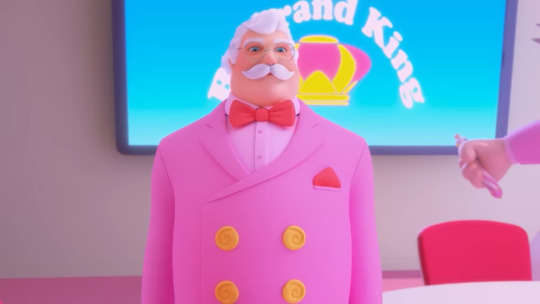
Nino suggests that Adrien talk to Gabriel himself, but as usual, Adrien doesn't think he'll listen, so the kids decide to go to Bertrand King's company while picking up an order for plastic containers for the Dupain-Chang bakery... even though I'm pretty sure most bakeries store pastries in paper instead of just plastic.
Nino has the others dress up in disguises, but like most of his plans this season, it fails miserably, so Marinette comes up with a little story about Adrien meeting up with Bertrand. The kids make an impassioned presentation to Bertrand, asking him to help change the way he operated his business like making his fans out of more biodegradable materials. Surprisingly, the man whose entire livelihood revolves around selling plastic doesn't want to listen to the people saying everything his company is doing is wrong.
Bertrand: This is all intentional. It's the wonderful cycle of throwing away and buying again that makes my fortune. If people didn't throw away and buy new items again then I, Bertrand King, would no longer be the King of Plastic! So, there is no way any of this is changing.
Wow, a rich person in Miraculous Ladybug turning out to be a total jerk? What an unexpected turn of events.
Bertrand points out how much plastic is used in everyday society, using pens and the Alliance rings as an example, and seeing how we cut to the next scene afterwards, we can assume he had them thrown out. Oh, come on, you couldn't even parody The Fresh Prince of Bel-Air like you did during “Migration”? The kids then try to go to Andre and Gabriel for help protesting the fans, but because one's a corrupt politician and another helped make them, they won't do a thing. Marinette tries to ask Nadja, the local news anchor, but because the ad revenue from Bertrand's company funds the channel she works for, she can't do a thing or else she'll be out of a job.
This leads to the kids deciding to do the sane thing and HACK THE NEWS BROADCAST SO THEY CAN MAKE A SPEECH ABOUT POLLUTION.
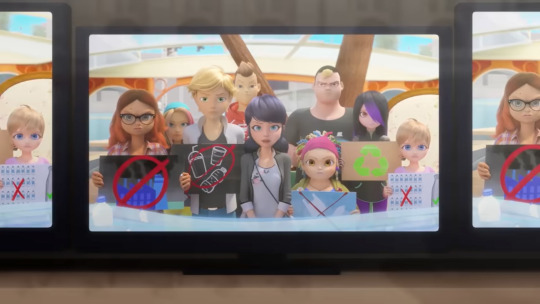
Because it's not like Marinette and the others could have just gone to another news network with this story or uploaded it to the internet instead, right? And sure, scowl at the camera while you're giving this presentation too. That won't make you look like a bunch of eco-terrorists at all. The kids give a presentation about how dangerous plastic is, and how people can use fans made of more biodegradable materials like bamboo instead. Also, we get cameos from Jess, Aeon, and Fei, but they're pretty much there just to remind viewers that the New York and Shanghai specials happened.
Of course, the episode's following RWBY Volume 8 logic, so rather than view them as a bunch of lunatics who hijacked a news broadcast, the public immediately turns on Bertrand's company, arguably faster than what happened with Andre in “Mega Leech”. Speaking of, Andre and Gabriel change their opinions to make themselves look like they were always against Bertrand, and seeing how this episode aired after Season 5 ended, didn't really sit too well with viewers.
Bertrand calls out Gabriel for lying, but Gabriel doesn't care, secretly using this as an opportunity to akumatize Bertrand into King of Plastic through his pen.

King of Plastic has a pretty underwhelming design. It's clear that the intent was to make him look like plastic, and there is a noticeable reflection on his body, but other than that, it doesn't really fit the anti-plastic moral. I think maybe if they did more to make his movements seem more stiff like a living doll, or at least make him look less like he's made of candy, it could work more. The Miraculous power this time is the Bee Miraculous' Venom, which he can use through one side of his lance to stun any victims so he can use the other side to turn them into plastic statues. It's sort of like the dollmaker episode of Arrow, only we don't get to hear the sound of anyone's esophagus hardening.
King of Plastic makes short work of Andre and the local police squad, and Adrien is forced to put teaching Marinette Mandarin on hold so he can transform into Cat Noir, while Marinette transforms into Ladybug as soon as she's alone. After he transforms Adrien's bodyguard into a plastic statue, King of Plastic fights Ladybug and Cat Noir, eventually transforming Cat Noir's staff into plastic too. Even though he was originally akumatized to get revenge on Gabriel, King of Plastic leaves the Agreste Manor and heads to the Liberty to get revenge on Marinette and Adrien's friends instead... for some reason. Even the episode points out how weird this is.
Cat Noir: Didn't you want to take revenge on Gabriel Agreste?
Ladybug: He probably has more than one enemy.
After following King of Plastic there with Cat Noir, Ladybug summons her Lucky Charm, getting a plastic bag. Because it's already made of plastic, it can't be transformed, which gives Ladybug an idea. She tells Alya to activate the Liberty's water treatment function, intentionally overloading it before Cat Noir Cataclysms the engine. This jettisons the collected plastic and overfills the deck of the Liberty, trapping King of Plastic so Ladybug can break his lance. So in an episode meant to teach kids about how dangerous plastic is, the day was ultimately saved by plastic. I'm sure that won't confuse any kids watching this in class.
Ladybug de-evilizes the Akuma, tells Bertrand about how dangerous plastic is, and he immediately vows to change his company's ways before Ladybug gives him a Magical Charm as useless as a plastic toy before she uses Miraculous Ladybug to fix the damage.
The episode ends with Bertrand funding the repair of the Liberty before vowing to change the way his company operates, as do Tom and Sabine, who now sell their products in eco-friendly containers. Unfortunately, with all the renovations being made to his company that come with moving away from plastic, Bertrand had to stop funding this groundbreaking cancer research institution in America in order to prevent his company from going bankrupt.
Anyway, this episode was pretty good. I honestly didn't have a lot of problems here. The plot was pretty straightforward, the themes of how easy it is to perpetuate companies that damage the environment were handled pretty well, and the main characters were pretty active.
Even the greedy corporate asshole meant to be a stand-in for real life executives was handled pretty well, having some quirks that make him stand out while showing how ignorant he is to the situation without making him completely insufferable. This episode could have easily gone the Captain Planet route with Bertrand, but they showed he wasn't intentionally endangering the environment because he felt like it, but rather, because he cared more about his company making money, even showing him ultimately realizing the error of his ways.
If there's one problem I had, it's with the way the Akuma fight was resolved. I get that any other Lucky Charm wouldn't have been immune to King of Plastic's plastic powers, but I feel like weaponizing the plastic the heroes spent most of the episode fighting against in order to stop the Akuma sort of muddles the message the episode is going for. It's not the worst way to resolve an Akuma fight, but it just bugs me personally.
While I still think “Mega Leech” did a better job with the environmental message, overall, this episode did a pretty good job teaching the moral it set out to teach.

THE BIGGEST IDIOT OF THE EPISODE IS... ANDRE (THE OTHER ONE)
Shockingly, nobody really acted that stupid this episode. Yeah, the kids were pretty naive thinking they could make Bertrand change his company's way of production, but still took action when that didn't work. Andre, on the other hand...
While Gabriel and Nadja had their own reasons to support Bertrand (Gabriel for Monarch reasons and Nadja for financial reasons), the only reason Andre went along with the fans polluting the environment was because they happened to have his image as one of the designs, and when the public started to turn on Bertrand, Andre acted like he always opposed him, and when confronted with an akumatized Bertrand, begged for his life like a coward and said he would reinstall the fan vending machines. While I guess it's better than having Chloe be the primary supporter of Bertrand's company, I need to reiterate that this aired after the last few episodes of Season 5 tried to place Andre in a more sympathetic light.
#immaturity of thomas astruc#iota#miraculous ladybug#marinette dupain cheng#ladybug#adrien agreste#cat noir#chat noir#gabriel agreste#hawkmoth#hawk moth#monarch#bertrand king#king of plastic#alya cesaire#nino lahiffe#mylene haprele#andre bourgeois#nadja chamack#kagami tsurugi#jessica keynes#eagle#eagle miraculous#aeon#uncanny valley#fei wu#ladydragon#lady dragon
178 notes
·
View notes
Text


8
What is subsistence? Subsistence means committing to a place and the people who live there. It means generally getting food from your region because that is the geographical area that you understand and are familiar with and therefore you know when and how much of each item or animal is acceptable to gather or hunt.
Subsistence means fishing with friends. It means preserving food with others in your group or village or clan or whatever. Subsistence is getting together, voluntarily, with folks that you have an affinity with, to provide yourself with food and shelter and musical instruments and friendship.
Subsistence means abundance and balance, it means wildness and harmony at once. Subsistence is not an impoverished, depleted existence.
Time spent repairing the fishing nets or pickling vegetables or building a communal smokehouse isn’t alienated time. It is meaningful and joyous. In some places likely characterized by songs and mead, in others by quiet satisfaction. It means providing for yourself where you live.
Subsistence is participatory. It involves understanding your habitat and finding a healthy place within it.
Subsistence could be the bedrock upon which an anarchic culture’s ways rest on. It is the foundation of a healthy, independent, autonomous set ofliving practices, based on the cycles of the place where you live. Sense of place. Sensual wisdom.
This doesn’t mean that primal people don’t make mistakes. But overall, they rely on directly lived experience complimented by generations old wisdom to make their decisions.
Life in nature isn’t nasty brutish and short. This is a lie of the fearful and the fear mongers, of ruling classes set on the conquest of land-based people.
Subsistence means no or very little material waste: no dumpsites, no burning piles of garbage, no necessity of a recycling industry, and no mountains of appliances, gadgets and plastic. It is based in the natural cycles of your group’s land base. It means respecting nature where you live and all of the life forms that you share your habitat with, even the ones that are threatening to you, because we are all interconnected.
Subsistence isn’t about dumpster diving, scams, food banks, stealing and welfare cheques. Subsistence is directly participating in a collectivity’s future and thus ensuring your own.
For now, a group of five or ten folks acquiring food and shelter together is a form of surviving or pioneering. Fifteen or twenty people providing food and shelter for themselves, communally rearing their children, and generally taking care of each other is perhaps the ember of a clan, but true kinship probably takes a few generations.
When fifty or more people spend their lives, within the context of a successful break from the current world of hierarchy and private property and ideology, making sure that everyone within their group is fed and sheltered and nurtured and have built an infrastructure of ways and tools to assist them, anarchy begins to take hold.
This speculative glimpse is just my notion of how an urban area might de-urbanize should the present social order get cast overboard. Today, inhabitants of rural communes and eco-villages can practice some subsistence skills, but these are generally projects of the fortunate, out of reach of the majority, and can’t be viewed as the primary tactic of a thrust toward autonomous, genuine communities embedded in nature. A rural intentional community based around principles of mutual aid, cooperation and ecology might be a qualitatively superior place to live than most others, but truly self-directed people embedded in a habitat requires secession from private property and a refusal to obey the laws of both the market and the nation-state.
Power abhors subsistence. Capitalism depends on obedient producers and consumers spending our lives shopping and at work, not friends and neighbors practicing communal self reliance within a shared habitat. But together we can say no, we can disobey, and in this negativity there will birth a positive and creative force.
#freedom#ecology#climate crisis#anarchism#resistance#community building#practical anarchy#practical anarchism#anarchist society#practical#revolution#daily posts#communism#anti capitalist#anti capitalism#late stage capitalism#organization#grassroots#grass roots#anarchists#libraries#leftism#social issues#economy#economics#climate change#climate#anarchy works#environmentalism#environment
18 notes
·
View notes
Text


Woodpecker: Building affordable housing in Columbia using coffee chaff and recycled plastic
Woodpecker, a Bogotá-based startup, is ingeniously addressing the country’s pronounced housing shortage, particularly in economically challenged communities. By utilizing the copious coffee husks produced by the coffee industry, Woodpecker skillfully manufactures lightweight, prefabricated panels combined with recycled plastic.
These panels serve as the foundation for constructing homes and classrooms. Woodpecker’s structures are not only cost-effective, retailing at about US$4,500, but they are also designed for straightforward, do-it-yourself assembly. This facilitates swift deployment in regions with scant infrastructure. The construction materials champion eco-friendliness, and their resistance to pests and moisture makes them a excellent choice for low-income housing across Colombia’s diverse climates.
CEO Alejandro Franco’s innovation was spotlighted when the Colombian government deployed Woodpecker homes as a rapid housing solution for Hurricane Iota victims in 2020. Despite encountering no power, muddy conditions and numerous other challenges, the homes proved indispensable in providing immediate shelter to those in dire need, especially in Providencia, where the hurricane had nearly eradicated infrastructure. Presently, Woodpecker has successfully marketed over 2,600 homes and is ambitiously planning for expansion.
source
#solarpunk#solarpunk business#solarpunk business models#solar punk#startup#reculture#columbia#materials innovation#low cost housing
17 notes
·
View notes
Text
i talk about the apocalypse a lot but it can't be helped. i feel like we all talk about climate change and economic collapse and the end of the world with such casualness nowadays, we just assume that of course, humanity will destroy itself and the earth. sometimes i feel guilty when my mom is driving and i see a cute little patch of wildflowers and i know the car is probably polluting the air we're breathing.
it's not even the big bad corporations, or the wealthy's use of private jets. it's me. having my mom drive me to school. my little electric oven and microwave and electric bill. i don’t think i will ever be able to afford an electric car or a solar panel, and even if i could, i wouldn't bother. it feels hopeless. all the recycling and all the self-flagellation and still the air quality declines
we're all just sitting around waiting for the air quality to decline and the rain to become acidic and the fish to lose their slime and the corals to bleach themselves clean of zooxanthellae. the coral are bleaching themselves so clean in some places it's just white. they turn themselves into bleached plastic-white skeletons
and of course all of this sounds so dramatic but it's the end of the world. it deserves to sound dramatic! corals are not just pretty, they are the foundation of the entire underwater ecosystem. they're little microcities that hundreds of millions of creatures built their lives on. i can't believe no one cares anymore. we're all just so numb to it, like this is normal. like yes, the sea is acidifying, and this is normal
and of course, there's the other half of humanity that just doesn't believe humans are capable of making a meaningful impact. i can't wrap my mind around those deniers either. just. just go touch some grass. go visit a beach. go visit a farm. go sit in a wild field and feel the wind and the sun and the rain and tell me again that the earth is invincible.
#climate change#climate crisis#earth#we need to#do something#radical change#writeblr#writing#writer stuff#writers on tumblr#writerscommunity#creative writing#writers of tumblr#poetry#poem#poets on tumblr
8 notes
·
View notes
Photo
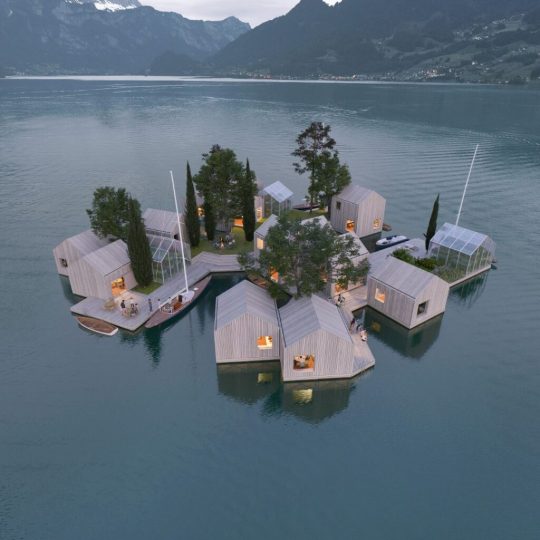
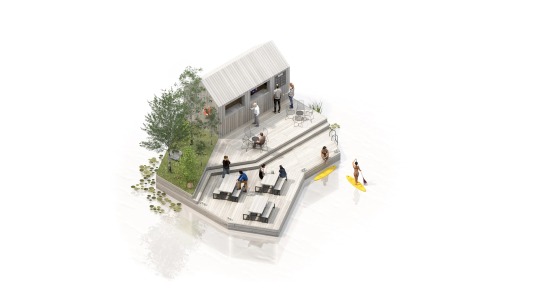
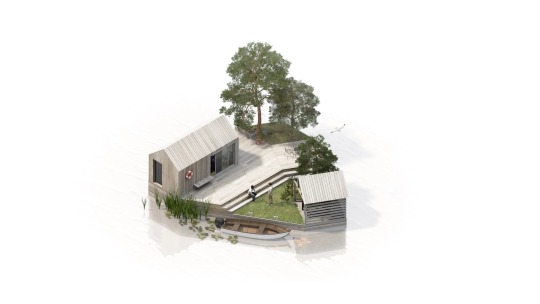


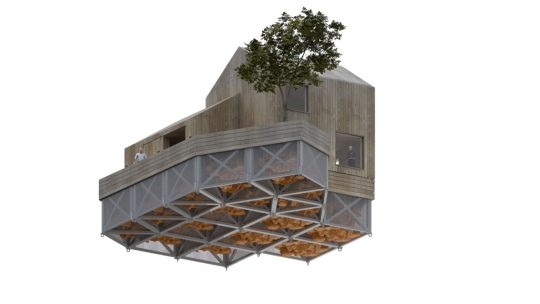

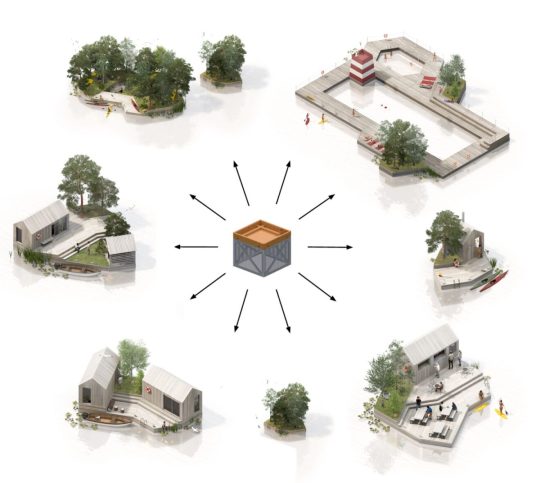
‘Land on Water ‘
A growing acknowledgement of sea level rise and an increased risk of urban flooding has contributed to a sharp increase in interest in building on water but current solutions.
The system is based on simple, flat-pack modules made from reinforced, recycled plastic that can be easily transported around the globe and assembled into countless configurations. Providing a secure floating founda-tion for building housing and infrastructure.
The system was inspired by gabion construction, an ancient technology which utilises mesh cages filled with rub-ble to create extremely sturdy, low cost foundations. In this case the concept is inverted; and the modular ‘cages’ are filled with locally sourced, upcycled floatation supporting the weight of any structure built on top. This has the unique advantage that floatation can be added or adjusted at any time if weight is added above.
Developed by the Danish Maritime Architecture Studio ‘MAST’ with the support of Hubert Rhomberg and venture studio ‘FRAGILE’
Photorealistic visualisations by KVANT-1
#art#design#urban#architecture#eco-friendly#sustainability#land#water#floatinghouse#sea level rise#climate change#flat-pack#module#recycling#modularhouse#prefabhouse#gabion#MAST#hubert rhomberg#fragile#concept#nature
224 notes
·
View notes
Text
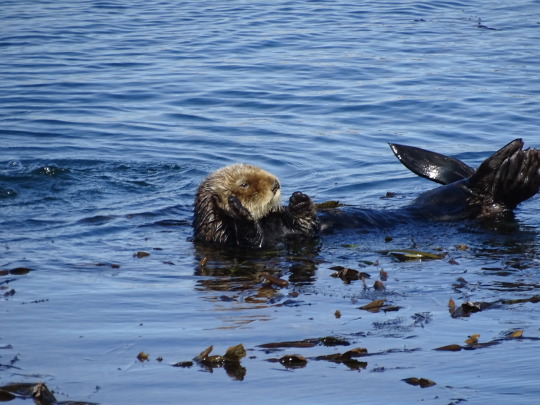

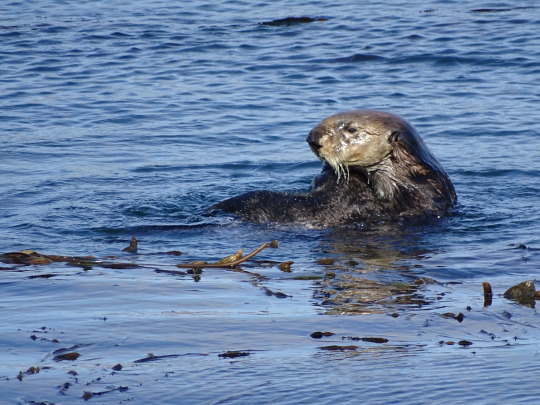

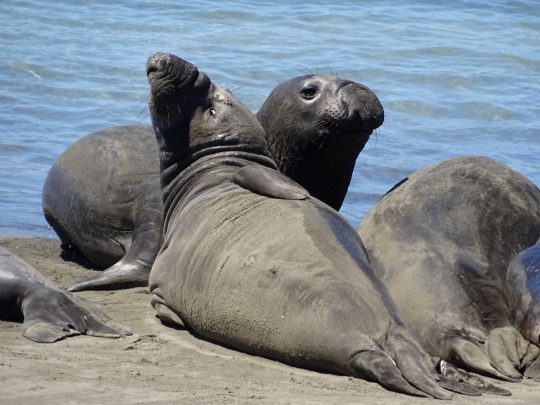

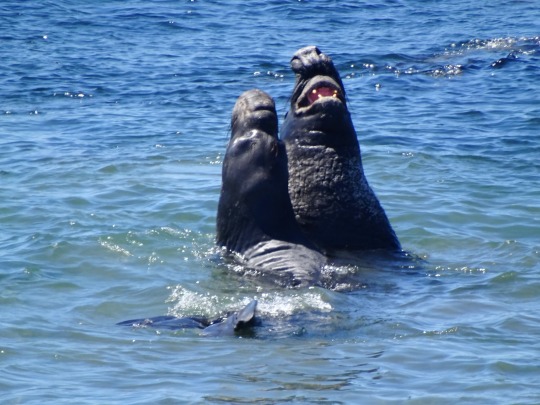


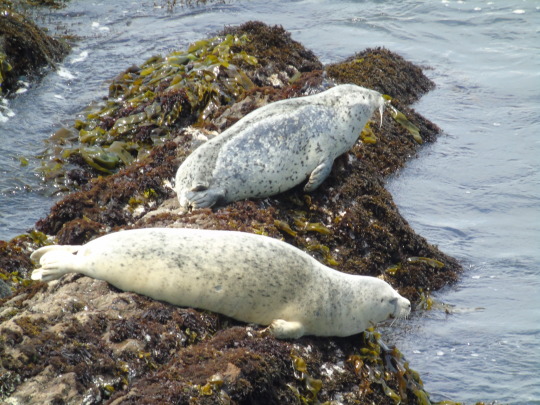
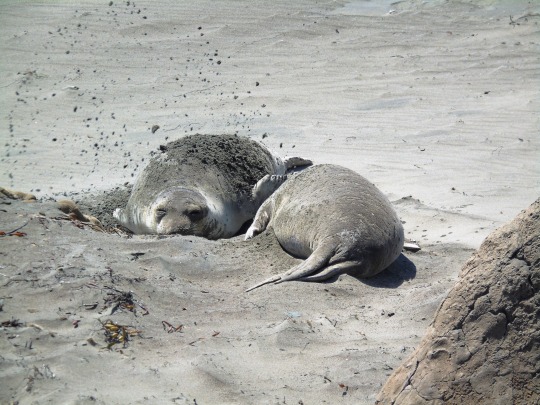



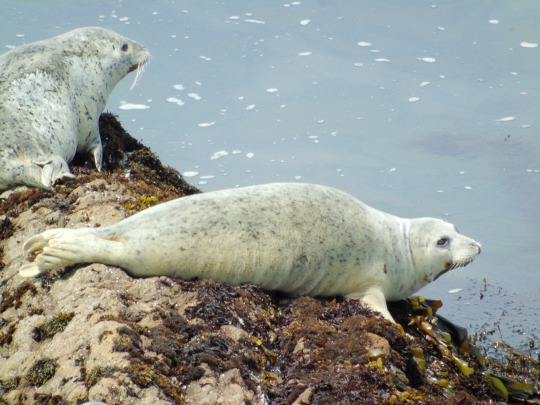

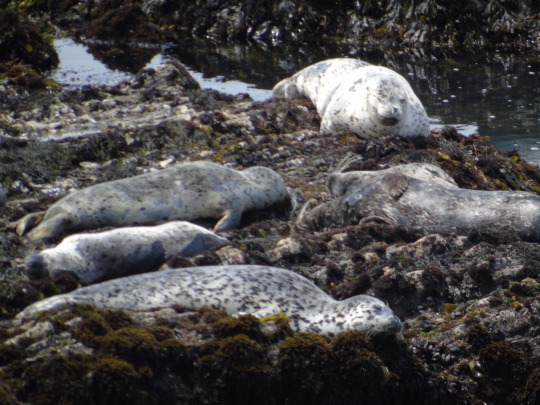
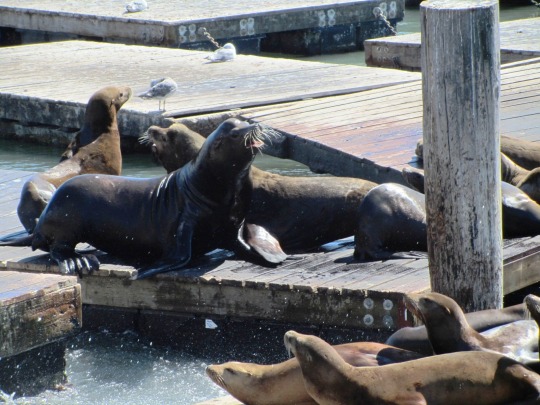

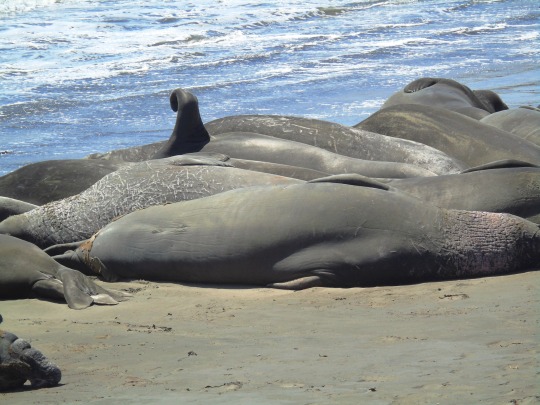
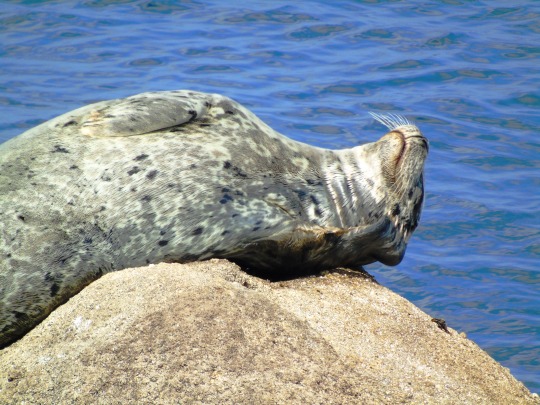
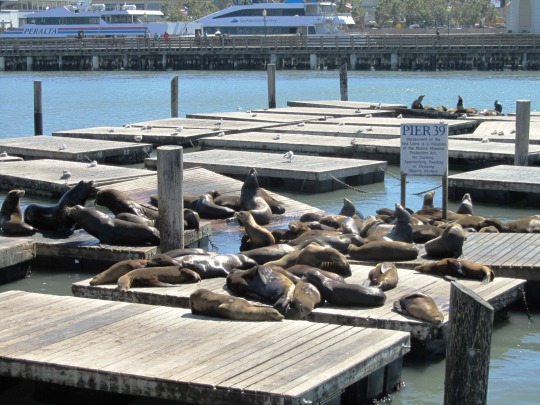
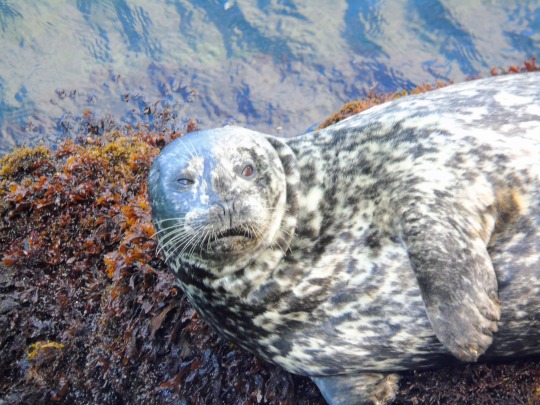
Marine Mammal Rescue Day
Marine Mammal Rescue Day is celebrated on April 27 annually. It is a holiday initiative by the state of California’s Senate. This day honors the people who have made a positive difference in the lives of marine mammals, such as wildlife biologists, veterinarians, and animal care specialists. It is also a day to consider our individual contributions to climate change that affect marine mammals’ lives. For the west coast, spring is the peak of animal rescue season owing to disease and famine. Action is conducted by marine mammal rescue organizations.
History of Marine Mammal Rescue Day
Toni Atkins, a California State Senator, passed the bill that designates April 27 as Marine Mammal Rescue Day. The celebration began in 2017. Gratitude is also given to the Marine Mammal Stranding Network for its continued dedication to the rescue, rehabilitation, and return of creatures stranded off the coast of California. The Marine Mammal Rescue Day celebration may be fairly recent, but the work of these marine mammal rescues has been in existence for far longer.
In 1975, The Marine Mammal Center (T.M.M.C.), formerly known as The California Marine Mammal Center, a private and non-profit organization based in the United States was founded to rescue, rehabilitate, and release injured, ill, or abandoned marine animals. Lloyd Smalley, Pat Arrigoni, and Paul Maxwell created it in Sausalito, California. T.M.M.C. has rescued nearly 23,000 marine mammals since 1975. It also acts as a research and education facility for marine animals such as whales, dolphins, pinnipeds (seals, walruses, and sea lions), otters, manatees, and dugongs.
Many water species require medical assistance due to illness or damage. Polluted waters, marine trash, and illegal fishing gears injure and kill aquatic life in general. The ocean has been polluted and tainted as a result of human acts and inaction. The waters have warmed as a result of climate change, and the patterns in which fish swim have changed. Young marine mammals are frequently unable to travel long distances or dive deep enough to get the food they require. All types of aquatic life are harmed by illegal fishing gear, pollution, and garbage. This is where aquatic mammal rescuers and specialists come in, devoting their time, energy, and resources to safeguard the safety of the marine life that we all should care about.
Marine Mammal Rescue Day timeline
1972
Marine Mammal Protection Act
President Richard Nixon signs the Marine Mammal Protection Act (M.M.P.A.) into law, establishing a national policy.
1975
The Marine Mammal Center
The Marine Mammal Center (T.M.M.C.), a private and non-profit organization based in the United States, is founded.
1992
Foundation for Marine Animal Husbandry
The Foundation for Marine Animal Husbandry, a nonprofit organization in Florida, opens.
2017
Marine Mammal Rescue Day
Toni Atkins, a California State Senator, creates Marine Mammal Rescue Day through a bill.
Marine Mammal Rescue Day FAQs
What are baby whales called?
Baby whales are referred to as ‘calves.’
What are the kinds of marine mammals?
Cetaceans, pinnipeds, sirenians, and marine fissipeds are the four taxonomic groups that make up marine mammals.
Do dolphins lay eggs?
Dolphins are mammals. Thus, they do not lay eggs. Instead, they give live birth to their young.
How to Observe Marine Mammal Rescue Day
Reduce, reuse, recycle: Simple steps to improve your actions to assist in reducing marine body pollution can make a tremendous difference. Reduce, reuse, and recycle as much as possible. Single-use plastic should be avoided and other trash should be disposed of sustainably.
Learn about ocean conservation: Learn as much as you can about ocean conservation. Discover what it entails and how you can help. Know about ocean conservation organizations and consider donating to support their objectives.
Volunteer yourself: Make yourself available to help marine conservation charities. Joining and volunteering with beach cleanup is one of many ways to do so. It may not seem like much but if everyone performed their modest part, we could have a significant influence collectively.
5 Interesting Facts About Marine Mammals
Sea otters have deft hands: Sea otters have deft hands for smashing sea urchins off rocks.
Sleeping with one eye open: Dolphins only sleep with one half of their brain and one eye closed at a time.
Semi-aquatic creatures: Sea lions are semi-aquatic creatures.
Penguin proposal: During mating season, several species of male penguins "propose" to their lady with a pebble.
Elephant relatives: Manatees are related to elephants and have more in common with them than they do with dolphins or whales.
Why Marine Mammal Rescue Day is Important
Human and marine life interaction: Whale watching benefits local economies in a variety of ways. According to studies, people can derive economic benefits from simply knowing that marine mammals are present and healthy even if they are unable to see them.
Marine mammal protection: The Marine Mammal Protection Act protects all 125 species of marine mammals that live in American waters. This makes it illegal to harm a marine mammal in any way that would interfere with its normal behavior.
It promotes a healthy ocean ecosystem: Maintaining the equilibrium of marine ecosystems requires robust marine mammal populations. Reduced numbers of whales, dolphins, or seals can have unpredictably negative consequences for other key species such as fish, birds, and invertebrates.
Source
#Point Arena#Pacific Ocean#Marine Mammal Rescue Day#27 April#travel#MarineMammalRescueDay#animal#wildlife#summer 2017#vacation#USA#original photography#tourist attraction#landmark#Harbor Seal#flora#fauna#Northern elephant seal#California#california sea lion#Monterey#sea otter#Morro Bay#West Coast#Elephant Seal Vista Point#San Simeon#Pier 39#San Francisco#cliff#beach
8 notes
·
View notes
Text
Eco-Friendly Beauty Products: Top Picks and Reviews
Embracing eco-friendly beauty products is a wonderful way to care for yourself while also caring for the planet. These products are made with natural, sustainable ingredients and often come in recyclable or biodegradable packaging. Here are some top picks and reviews of eco-friendly beauty products that you'll love.
Herbivore Botanicals Lapis Facial Oil
This facial oil is perfect for calming and balancing the skin. It's made with natural ingredients like blue tansy and squalane, and it's free from synthetic fragrances and dyes.
Why It's Eco-Friendly: Herbivore Botanicals uses sustainable packaging and sources ingredients responsibly.
RMS Beauty "Un" Cover-Up Concealer
A versatile product that acts as both a concealer and a foundation. It provides excellent coverage while nourishing the skin with coconut oil and beeswax.
Why It's Eco-Friendly: RMS Beauty focuses on raw, food-grade, and organic ingredients. The packaging is also recyclable.
Ethique Eco-Friendly Solid Shampoo Bars
These solid shampoo bars are highly effective and come in a variety of formulas for different hair types. They lather well and leave hair feeling clean and soft.
Why It's Eco-Friendly: Ethique's products are plastic-free, biodegradable, and compostable. Plus, one bar replaces three bottles of liquid shampoo.
Tata Harper Regenerating Cleanser
A luxurious exfoliating cleanser that revitalizes the skin. It's made with natural ingredients like apricot microspheres and BHA from white willow bark.
Why It's Eco-Friendly: Tata Harper uses 100% natural and non-toxic ingredients. The packaging is made of glass and is recyclable.
Ilia Beauty Limitless Lash Mascara
This mascara provides length and volume without clumping or flaking. It's formulated with organic bee and carnauba waxes to nourish lashes.
Why It's Eco-Friendly: Ilia Beauty is committed to clean, natural beauty and uses sustainable packaging materials.
Lush Fresh Handmade Cosmetics
Known for their vibrant and effective products, Lush offers a wide range of skincare, haircare, and bath products. The Charity Pot Body Lotion, in particular, is hydrating and has a lovely scent.
Why It's Eco-Friendly: Lush focuses on fresh, ethically sourced ingredients and minimal packaging. Many products are sold "naked" without packaging.
Bite Beauty Agave+ Intensive Lip Mask
This lip mask is deeply hydrating and perfect for dry, chapped lips. It's made with agave nectar, jojoba oil, and lanolin.
Why It's Eco-Friendly: Bite Beauty prioritizes clean, food-grade ingredients and uses recyclable packaging.
Tips for Choosing Eco-Friendly Beauty Products
Check Ingredients: Look for natural, organic, and non-toxic ingredients. Avoid products with harmful chemicals like parabens, sulfates, and phthalates.
Packaging Matters: Opt for products with recyclable, biodegradable, or minimal packaging. Brands that offer refillable options are a great choice.
Research Brands: Support brands that prioritize sustainability, ethical sourcing, and cruelty-free practices.
DIY Options: Consider making your own beauty products at home using simple, natural ingredients.
Switching to eco-friendly beauty products is a fantastic way to support your health and the environment. These top picks offer a range of benefits, from nourishing your skin to reducing waste. By making mindful choices, you can enjoy a beauty routine that's both effective and sustainable.
What are your favorite eco-friendly beauty products? Share your recommendations and reviews in the comments below! 🌿💚
10 Simple Ways to Live More Sustainably
DIY Natural Skincare Recipes
The Importance of Detoxifying Your Home Environment
Follow me for more tips on eco-friendly living and wellness!
2 notes
·
View notes
Photo

towwn: eco sunscreens 🌎♻️☀️🧴
whether you’re at the beach, a park, or simply strolling outside – even on cloudy days! – sunscreen is a must. so we rounded up some of our favorite eco-smart serums + sprays that prioritize human health + nature. all are free of oxybenzone and octinoxate, two chemicals known to damage coral reefs. did we miss your favorite eco spf? share it with us in the comments below! 💚
@everydayhumans
the 1st plastic-neutral certified sunscreen, this derm-tested oil is infused with squalane, jojoba seed + vitamin e, which provide sustainable shimmer and skin protection.
@koparibeauty
this vegan + cruelty-free gel checks both beauty + eco boxes: touting a glowy, water-resistant golden shimmer + made from a plant-based blend of macadamia, hibiscus, avocado + coconut oils that offers broad spectrum protection.
@versed
this mineral sunscreen covers all your bases with a special 3-way protection protocol against all the elements—environmental pollution, electronic pollution from screen time, and the sun. its nontoxic, vegan/cruelty-free + packaging is made from 79% post-consumer recycled plastic.
@albabotanica
an affordable, eco-friendly choice recommended by the skin cancer foundation, the biodegradable formula offers water-resistant, spf 50 protection in a convenient spray.
@tower28beauty
boasting 17 shades, the tinted sunny days mineral formula offers broad spectrum spf 30 protection that evens out redness + soothes uv-stressed skin.
@lovesunbody
this reef-safe, vegan/cruelty-free, 100% natural mineral formula has a seal of approval by @ecocertofficial – the *only sunscreen* with this certification. the brand recently introduced 3 new sheer body formulas to its sustainable + ethical product line.
@solaraskincare
known for clinical sun protection + defense against pollution, the new “go!” collection launches in @target this summer. the brand’s eco-friendly practices offer healthy options that are gentle on the planet and your wallet.
@tula
a daily broad-spectrum formula that protects from pollution + blue light. good year-round and won’t leave a white cast, so wear it under makeup or on its own.
20 notes
·
View notes
Photo

Researchers build hard, self-healing plastic that can be reshaped and recycled
Rigid plastic is very useful, but difficult to recycle. At least it was, until the discovery of so-called vitrimers. Using those vitrimers, Researchers at Wageningen University & Research have laid the foundation for a new type of sustainable, hard plastic that is easy to deform and grows back together on its own. Although researchers only have a prototype so far, in the future it could be an excellent replacement for the hard plastics we use now. It could for example replace the plastics in building materials, plastic cups, dashboards, laptops and toys.
The first plastic made entirely of petroleum was invented over a century ago. Chemists soon discovered that small alterations in the building blocks of plastics could change the properties and thus create new types of plastic. Since then, this strong, cheap material has become indispensable in our society. We have plastic window frames and other building materials, plastic cups and bottles, tires and dashboards, lenses, laptops and toys. And, not to mention, the majority of our food is wrapped in plastic.
Read more.
36 notes
·
View notes
Photo

It’s 88°F, we’ve got a full basket of wet, clean clothes, some clothes pins, it’s sunny outside, and there is a steady breeze. Let’s hit it.
In other words, it’s time to dry laundry outside.
Also known to me as crispy bath towel season. In the winter a soft, plush towel brings soothes me. In hot weather I love how a line-dried towel scratches my back as I dry off. It’s wonderful.
Speaking of towels, I just bought two more at Target. Navy blue. Great price. I love the locker loop sewn into them.

I get all sorts of Earth-cred with my clothes line. Women, including Gaia, dig it, because real men have smaller carbon footprints. And our laundry smells nice too, without using any chemicals that come in plastic bottles.
I don’t need solar cells or a windmill. Some cheap aluminum tubes (which are recyclable!) and a few yards of cord give me the foundation to dry laundry like people did in the 18th century.
Most of my clothes pins are wooden too, carved out of trees that died of old age and fell to the forest floor or from reclaimed barn wood. At least that’s what the impatient, teenage cashier told me at the hardware store. It was almost like he didn’t enjoy talking to me about my laundry techniques and would say anything to get me to leave.
There are some plastic clips too. Don’t hate me, but Ikea had them for such a low, low price a few years ago. I can’t walk into the big blue store without buying something very inexpensive.

36 notes
·
View notes
Text
Ocean Acidification
Ocean Acidification threatens the whole foundation of the ocean food chain. Shells of marine life gradually dissolve away, leaving those animals spending more energy on building shells than on finding food, which makes it harder for them to grow and survive and the predators that eat them will struggle to survive as well.
Ocean Acidification threatens coral reefs due to climate change. An increase in greenhouse gasses causes climate change and ocean acidification, and a change in the climate causes a change in the ocean. When the ocean is warmed, sea levels rise and storm patterns change which smothers the coral reef and destroys its structure. Eventually, changes in precipitation will increase freshwater, sediment, and land-based pollutants like fertilizer and other nutrients, to runoff into the ocean and increase algal bloom and murky up the water, which reduces the amount of light able to pass though. Ocean currents altar, and the changes in connectivity and temperature cause a lack of food. Finally, pH levels will reduce and growth and structural integrity will decrease.
Ocean Acidification affects the temperature of the ocean by warming it. Zooxanthellae are compounds made by coral polyps, creatures making up coral that receive shelter. They turn sunlight into energy, which they provide mostly to polyps. Coral and zooxanthellae are temperature specific, and if it gets too warm zooxanthellae cannot convert sunlight to energy efficiently, leaving extra energy which becomes toxic chemicals. Those toxic chemicals remove zooxanthellae. When they are all gone the coral turns white, coral bleaching. If these zooxanthellae are missing for too long the coral structure will become a wasteland.
One way we can decrease ocean acidification is by shrinking carbon footprint. This means reducing the amount of greenhouse gasses we produce. Some ways we can do this is by driving less, burning less fuels that we pollute our atmosphere with. We can also use energy efficient appliances and reserve water and trees.
Another way we can reduce pollution is reusing and recycling. Factories run to produce more and more plastics and other nonbiodegradable things. While our factories run they release greenhouse gasses and smoke. The things we produce get thrown into wastelands rather than be used again, and this pollution harms a variety of life. We can also reduce harmful chemicals we use, like chemicals we spray outside to kill bugs and pests. People also consume lots of non sustainable animals, which leads to an endangerment of species, and we already have a large enough food waste rate. We should consume animals that we have more of that can sustain reproduction and life well.
Humans are constantly burning fossil fuels when simply participating in daily activities. Driving, throwing away trash, killing/consuming animals, using paper and water, working in an industrial setting, tending to farms and livestock, use of electricity and nonrenewable energy, all cause pollution. The pollution caused leads to climate change by the carbon dioxide emission, which is the source of ocean acidification. Climate change warms the ocean and takes up less carbon, and our marine life consumes these carbonate ion molecules. But when carbonate ions react with water it releases hydrogen ions, which makes the ocean more acidic and slowly dissolves life.
just a lil smth for school :) AWARENESS!!!
#ocean acidification#greenhouse gas emissions#awareness post#save our planet#pollution#save the ocean#save earth#coral bleaching#fossil fuels#toxic chemicals#zoox anthellae#polyps#marine life#climate change#global warming#coral reef#ocean currents#sea#reduce reuse recycle#recycle#reuse#reducing
3 notes
·
View notes
Text
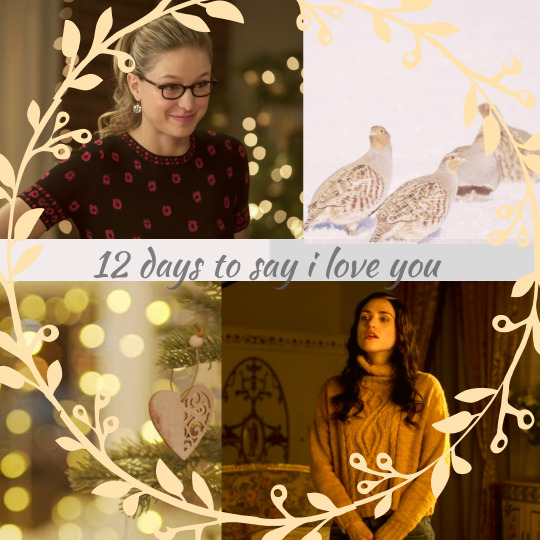
chapters 1, 2, and 3 (or, all earlier chaps on AO3)
chapter 4: calling birds
Lena wakes up the morning of Wednesday, December 28th with two hundred and twenty-seven new Twitter followers and over three thousand mentions. There’s also a 2am text from Kara, just Good night, Lena <3, which does nothing to explain Lena’s sudden surge in social media popularity but does serve to warm her cheeks for a minute or two. She's a fool. A simple good night, and it has her blushing like a schoolgirl.
It takes a little digging, Lena still propped in bed in soft pajamas under an even softer duvet, but eventually she finds the source, a tweet from Kara's official publicity account, timestamped 2:17am:
@therealsupergirl: Always happy to serve the people of NC ofc, but have you checked out what @lenaluthor is doing lately @LLFoundation #lenaluthorfoundation? Low-cost water purifiers? High efficiency solar power generators? Safe plastics recycling? She's the real MVP--show her some love! 💙♻️❤️
What follows is a collection of some of the kindest tweets she's ever had directed towards her, most from complete strangers. Sure, there's a wayward screed or two, but of the few dozen she reads before she looks at the time and realizes she has to get up so she can be ready for an 8am Zoom call with a coalition of East Coast investors, eager to donate prior to the New Year for the tax write-off, the vast majority are complementary.
@piratelifeforme: Wow! I spent all morning reading about what @LLFoundation is up to and I had NO IDEA. Do yourself a favor and check it out, then get on board this train. Superheroes are one thing, but humans have the power to help fix this mess we made, too.
@greenplanetnow: yes @therealsupergirl, you're right! The #lenaluthorfoundation cleaned up a massive water contamination issue in my town after months of unanswered calls to the gov. They did it without asking for a cent, but almost no one reported on it. Not all heroes wear capes. 🙏🏾
@drclimatewatch: As one of the scientists following @lenaluthor 's work, I can verify: her Foundation's charter and her team's innovations truly can revolutionize environmental science. We've wasted too much time on petty rumors when we should be supporting her as a brilliant engineer.
Even Sam has retweeted Kara's message, absent her usual snark.
@samarias: Damn straight, @therealsupergirl! @lenaluthor is not only the smartest woman on the planet, but also a great boss and a true friend who will go to hell and back to do the right thing no matter what people think of her.
The investors on the 8am call are more generous than Lena expected, having thoroughly read her Foundation's report and expressing genuine excitement over the work she's doing. They don't mention Supergirl's tweet, but Lena knows it influenced their level of enthusiasm.
Daniel, her Foundation's head of publicity, calls at 9:30, barreling past Lena’s apologies to assure her that he's thrilled to trade in a couple of his vacation days to help navigate this sudden windfall. After that, she migrates from her home office to the Foundation office and spends the next few hours on the phone with department heads and her research team strategizing ways to capitalize on the good press wrought by Kara's tweet. By noon, Daniel has fielded calls from twenty-six news outlets, local, national and international, and issued a press release thanking Supergirl for her generous endorsement and directing interested parties to the Foundation's robust website, white papers, and quarterly reports.
"Want me to help craft your personal response?" Lena's social media manager, Rochelle, is on the phone now. Lena's name is trending, for a good reason for the first time in forever, and she's long since stopped trying to keep track of her mentions.
"Pardon?"
Rochelle had been typing in the background of their call, but now the clacking pauses. "I had your Foundation account respond several hours ago, but I imagine you want to respond personally, too. Right?"
Oh. Of course, Lena wants to respond personally, but none of the things she's thinking are fit for public consumption. She's pretty sure a declaration of love would shift the conversation in counterproductive ways, for example. Same with asking Kara via tweet about last night's kiss. And then there are the things she wants to say but can't put into words. A wellspring of gratitude. Overwhelming affection. Anxiety about living up to Kara's public declaration of support. Confusion over Kara's decision to tweet that support to the world and to call on her followers to do the same.
"Thanks, Rochelle. Everything you're doing is great. I've been swamped, but I absolutely plan to respond. I think I can manage to come up with something on my own. Is there anything else? I have another call."
"All good, Ms. Luthor. Let me know if you change your mind."
It's a lie. There's no other call, but she needs a moment to think. She needs to talk to Kara. Not tweet at her, just talk.
Almost immediately, she loses her nerve, the possibilities of all the directions their conversation could go swirling in her mind. Texting seems like a safe compromise, although she bungles it pretty much out of the gate.
Sorry I didn’t message before now. I’m being besieged with tweets for some reason....
The reply is immediate. Oh no. Are you mad? 🥺 I just wanted everyone to know how awesome you are. And I wanted you to hear it from them, too, since you never believe me when I say it.
Lena is not very good at this–gratitude or friendship or whatever social minefield this is that Kara is clearly so much better at navigating. The idea that Kara could possibly think she’d be mad for something so sweet hurts her heart.
Not mad at all! Sorry. That text was supposed to be – What? Coy? Flirtatious? Funny? It was clearly none of those things; she lands on – thankful. I was just so surprised.
A good surprise?
A lovely surprise, yes.
<3
Lena allows herself a few minutes, then, just to sit and text her best friend, without worrying too much about everything else. She tells her about waking up to the Twitter mentions, about the new investments, about how Daniel and Rochelle were so excited they both offered independently to defer part of their vacation time to help her wrangle media requests and publicity. She doesn't tell her how warm the messages from thousands of people made her feel, that those completely unknown to her might be affected by what she’s done, for good this time, that other people might actually have cause to like and respect her.
In the end, she settles for a Streetcar Named Desire joke.
I have never depended on the kindness of strangers, Kara.
Kara doesn’t miss a beat. You don’t strike me as a Blanche anyway. Did it feel good, this one time?
Leave it to Kara to cut to the chase.
It did. Thank you.
My pleasure.
Lena’s phone beeps. Daniel needs her to talk to some new potential investors in a half hour and has sent along their portfolio.
I have to go. I’m so sorry.
It's ok. I know you're busy.
Thanks to you, even more so than usual. 😂
Haha. I didn’t think that one through, did I?
I don’t mind, Kara. I’m thrilled the Foundation is making a difference.
I mind! When are you going to find time for me if you’re mobbed by all your other adoring fans?
Lena looks hard at her phone. All your other adoring fans. She could go for teasing deflection or affectionate sincerity in her response, and vacillates for a moment between the two.
You know you're my favorite. I should have time after tomorrow’s press conference? Coffee?
I’d love that.
Before Lena turns to the files Daniel sent, she pulls up Twitter on her computer, and quickly fires off a response before she can talk herself out of it, posting it, with only a hint of trepidation, for all the world to see.
@lenaluthor: Thank you all. I want nothing more than to work together to save our planet. It's ours, aliens and humans alike. And Supergirl? I couldn't ask for a better ally or partner, one who challenges and encourages me. Not a day goes by I'm not grateful for you, @therealsupergirl
#supercorp#12 days to say i love you#twelve days of Christmas#in which I really take liberty with the meaning of 'calling birds'#kara danvers#lena luthor#supergirl would have so many twitter followers#and lena would definitely buy it from musk and fix everything#publicity fluff#here we go
48 notes
·
View notes
Text
The Fast Fashion Industry and Its Environmental Costs
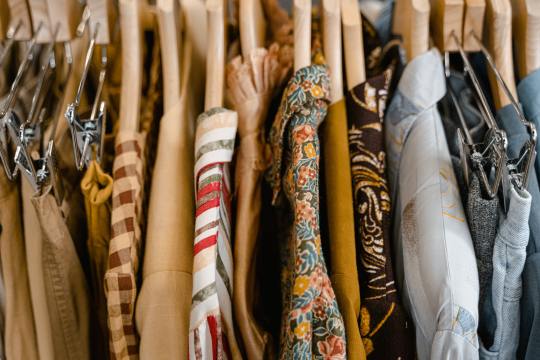
With the ever-changing fashion trends circulating on social media and the affordable prices in stores, the fast fashion industry has continued to grow over the past decade with quick online deliveries, rapid clothing production, and overconsumption of clothing items. Many companies within the fashion industry have opted to have their manufacturers overseas for cheap labor to avoid the high minimum wages enforced by developed nations. Although more affordable garments are now accessible to low-income people, it also comes with the cost of ecological destruction and humane indecency.
Forced Labor for profits
Many companies such as Shein, Forever 21, H&M, Urban Outfitters, and Zara use sweatshops, workplaces with socially unacceptable conditions that pay low wages to produce low-cost clothing items. Although these companies can maintain a low price tag on their products, they become part of the unsustainable practices of fast fashion because of underpaid labor, poor working conditions, and a longing contribution to plastic production. By consistently shopping from these brands, many support the unsustainable practices that are the backbone of these companies. Instead, choosing to shop at thrift stores, only buying clothes when necessary, reusing old clothing items, thinking before purchasing, and creating a capsule wardrobe, a set of clothes that can be worn interchangeably, can reduce the need to support the production of these companies.
Materials used
When companies want to profit while manufacturing clothing, they tend to choose low-cost artificial synthetic fibers such as polyester, rubber, and nylon, which take more energy to produce than natural fibers such as wool, cotton, and bamboo. Natural fibers have a lower environmental impact throughout manufacturing because they do not require as many chemicals as synthetic fibers. When choosing what clothing garments to buy, purchasing the ones manufactured with natural fibers is more beneficial to our environment because they can break down quickly in nature.
Polluted waters and excessive water use
The fashion industry is one of the most water-intensive industries because it uses water to spin, dye, and finish the textile. Its use of dye has contributed to the wastewater dumped into our streams, rivers, and oceans, which can spread toxic chemicals to marine ecosystems.
Plastic microfibers
Not only is the pollution of waters happening before the sale of items, but after customers buy clothes, the presence of microfibers that detach when it is in the washer goes into wastewater that will eventually reach our oceans, further polluting them. With filtration as the only laborious and expensive way to remove microplastics, it becomes unsustainable and remains in the ocean. It ends up in the human food chain through agricultural communities and sea life, ultimately causing adverse health effects.
Textile waste
As fashion trends constantly change with the modern age of technology and fast fashion's affordability, many garments are discarded and donated not long after purchase. Although donating might seem like a better, more sustainable way to recycle clothing, it might end up in landfills regardless if not sold. According to the Ellen Macarthur Foundation, "it is estimated that people are buying 60 percent more clothes and wearing them for half as long." This practice has only increased over time, allowing truckloads of textiles to be dumped into landfills or incinerated every second. To better maintain our clothes, one should be more conscious about purchases by deciding if a clothing piece has the potential to be worn multiple years after its purchase, lessening the need to throw away or donate so often.
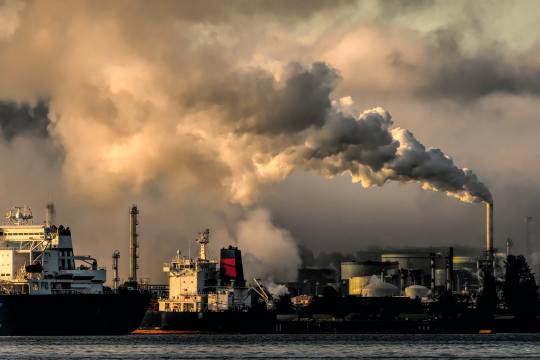
Carbon emissions
With the production and incineration of clothing items, carbon emissions are released into the air, causing public health dangers to communities around factories. The World Bank says, "The fashion industry is responsible for 10 % of annual global carbon emissions, more than all international flights and maritime shipping combined." With new technologies that try to capture the pollutants, "they remain present and often are turned into a dangerous substance," which will pollute our air regardless.
Solutions
With the overwhelming amount of affordable clothing items that are ecologically damaging, being more conscious is always a way to reduce the effects of consumerism. It is ultimately up to us, consumers, to beware of the adverse impacts of supporting unsustainable brands and find eco-friendly companies that put the planet first. Some sustainable brands to shop from are:
Patagonia
Raven + Lily
The Classic T-Shirt Company
Cou Cou Intimates
My Mum Made It
Avani
Good Guys
Shopsoftlana
L'Envers
Pela
Sources
#climate change#earth#environment#environmentalism#epa#climate justice#fast fashion#carbon emissions#carbon footprint#microplastics
8 notes
·
View notes